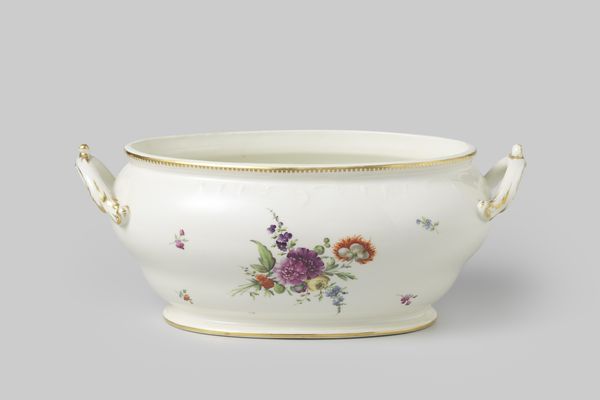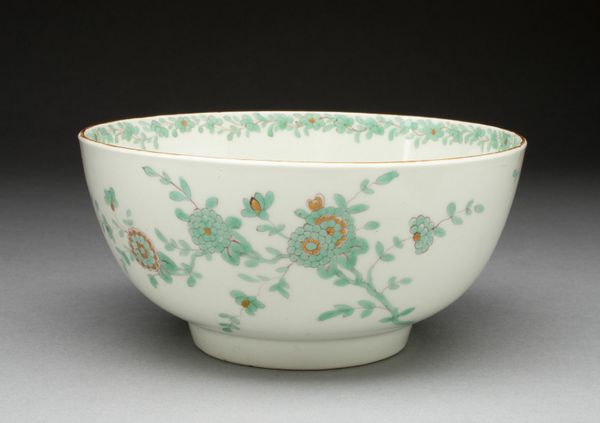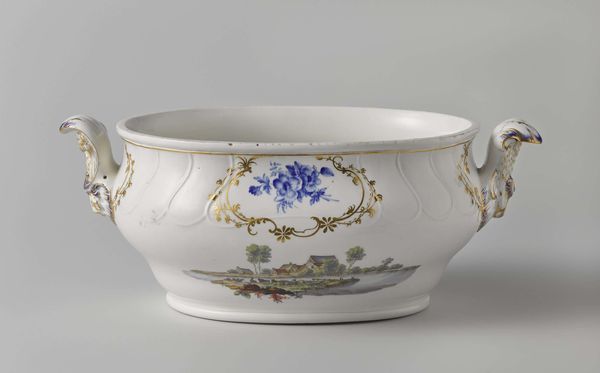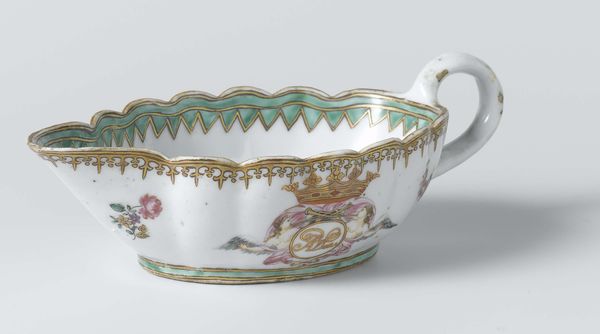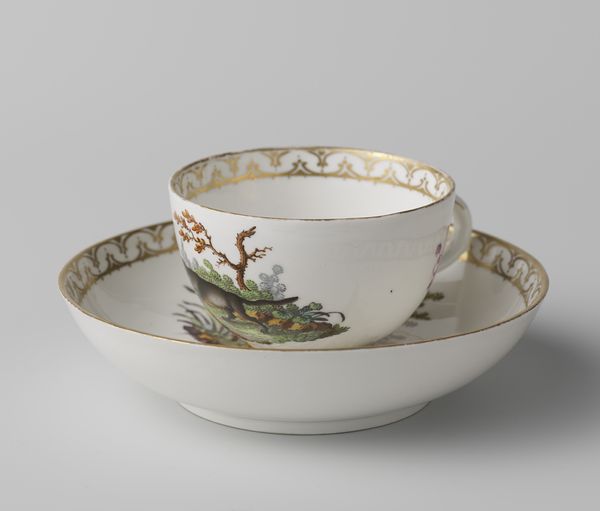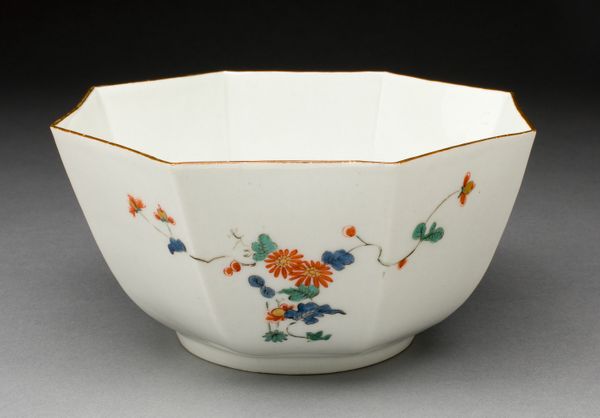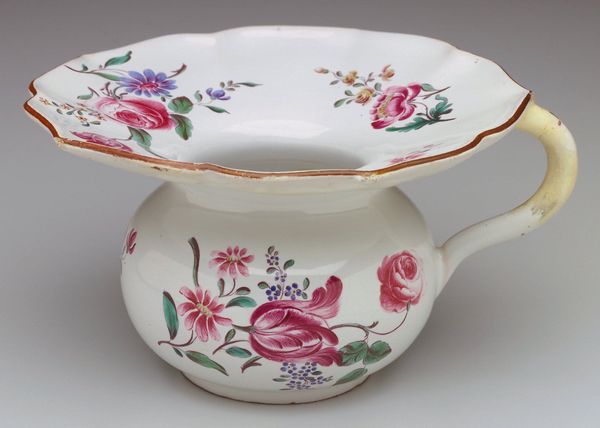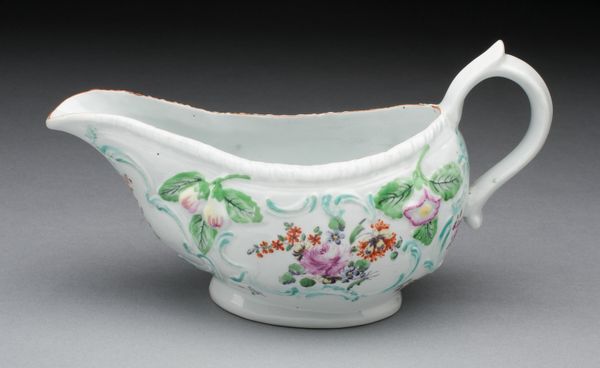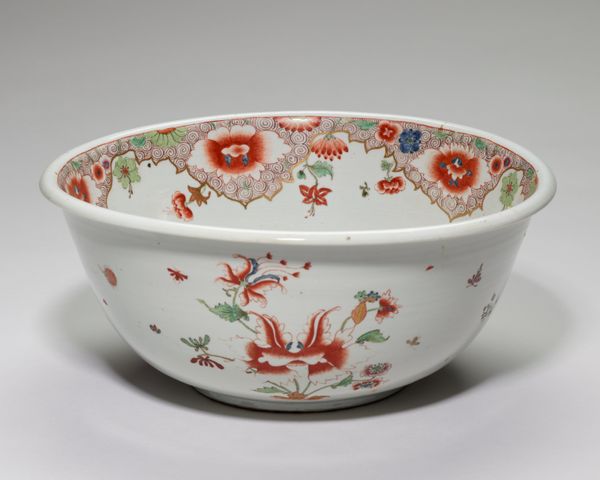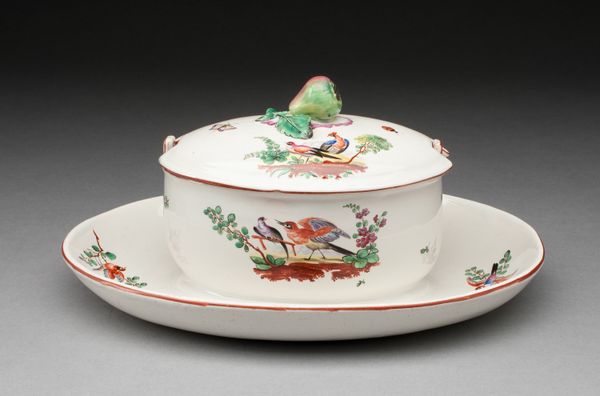
ceramic, porcelain
#
ceramic
#
porcelain
#
ceramic
#
genre-painting
#
decorative-art
#
rococo
Dimensions: 3 1/8 x 6 5/8 x 6 5/8 in. (7.94 x 16.83 x 16.83 cm)
Copyright: Public Domain
Editor: So, this "Bowl," dating from around 1750, made with porcelain by the Meissen Porcelain Factory… I’m struck by how these little genre paintings are placed on such an elegant object. What can we say about a bowl, beautifully made and carefully decorated like this? Curator: What immediately stands out is the stark contrast between the scenes depicted and the refined nature of the porcelain itself. On the one hand, we have these picturesque scenes suggestive of trade or perhaps even colonial encounters—observe the figures disembarking from a ship, perhaps engaging in commerce or something less savory—juxtaposed against delicate floral motifs and ornate gilded patterns. This creates a tension that is central to understanding Rococo art as both a celebration of elite lifestyles and an indicator of growing global entanglements. Editor: Tension? What kind of entanglements are we talking about here? Curator: The scenes aren't purely decorative. They reference real-world dynamics of the time: trade, colonialism, and the power structures inherent in those relationships. The bowl becomes a canvas for encoding these realities, but through a lens of privilege. We must ask whose story is being told, whose labor and resources made this bowl possible, and who would have had the luxury of using it. Editor: Ah, so it’s like… the bowl is performing a kind of cultural dance. Highlighting wealth, whilst perhaps also acknowledging uncomfortable realities. Curator: Exactly! Consider the bowl as a microcosm of 18th-century society: beauty and brutality intertwined, elegance masking exploitation. The flowers and gilt edges symbolize luxury and status, but they exist alongside vignettes of commerce, hinting at broader economic and political systems at play. By bringing a post-colonial lens to something that might seem purely decorative, we challenge our assumptions and reveal hidden narratives. Editor: That really makes you rethink how something seemingly harmless like a bowl can carry so much weight. I'll never look at porcelain the same way. Curator: And hopefully, it inspires us to question the historical narratives embedded in everyday objects and environments, urging us to advocate for a more equitable and truthful representation of history.
Comments
No comments
Be the first to comment and join the conversation on the ultimate creative platform.
